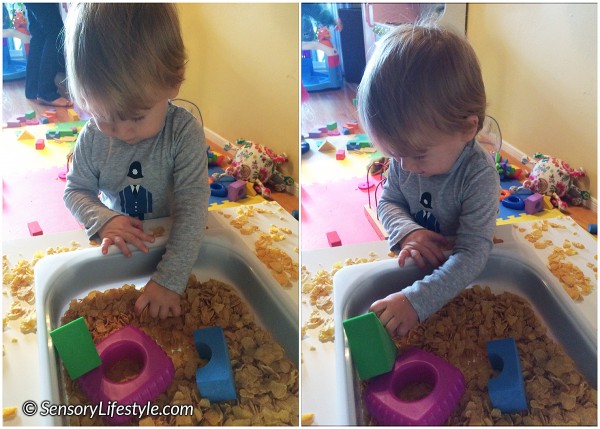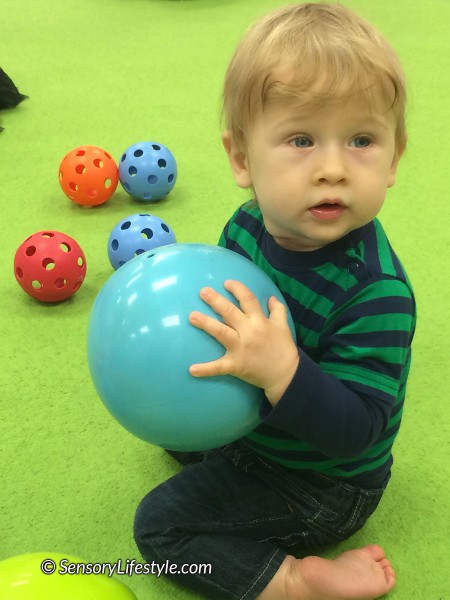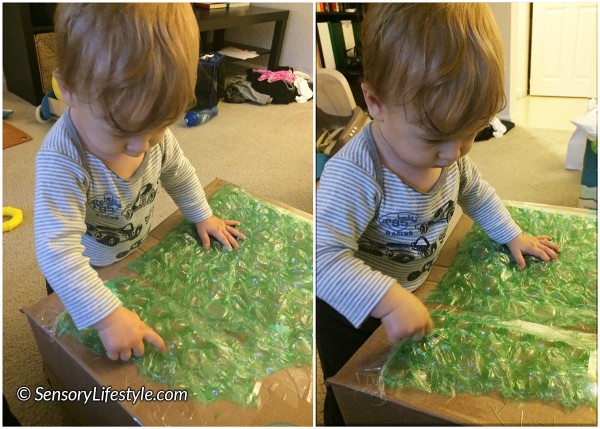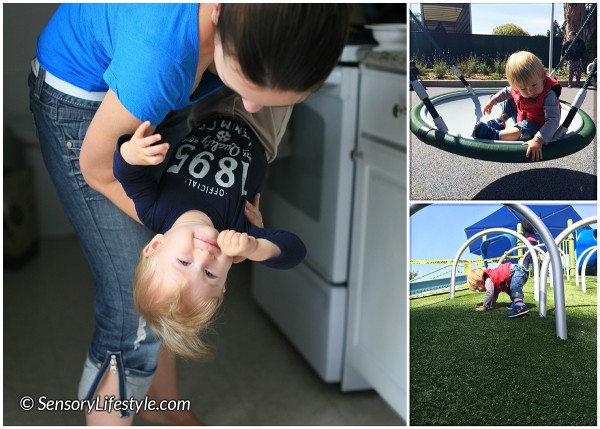Month 13: Top 10 Sensory Activities for 13 month toddler

8 min read
As an Occupational Therapist and a Mom I have put together top activities for your 13 month old toddler. These activities will focus on strengthening their cognitive (mind) and motor (movement) skills.
Drum di di dam dam fingers and hands!! Drumming along drum di di dam dam with fingers and hands! Music creation in progress using fingers and hands.. colorful plastic containers drumming drum di di dam dam! Drumming containers full of color. Green, red, yellow… Drum di di dam dam drumming along.
Wait….Space the final frontier is calling me to explore further.. Drum di di dam dam the drum goes on my head. Like a space helmet! Drum di di dam dam.. Oh… how fun! Time to explore…
Until next month….
As you see it is very important to provide your little one with opportunities for free play. You never know what they will come up with. Through free play you can encourage creativity and imagination. Creativity helps them to become better problem solvers. They will be starting to be adaptable, flexible and original in their thinking. As they become older and gain more skills this will become more complex. This is a great place to start though.
Activities for your 13 month toddler
Your 13 month old is continuing to explore and experiment with the surrounding environment. Below are some ideas that you can try with them to keep strengthening many of their developing skills. As always they have been tried and tested.
1. Messy Play: Edible sensory tub

| Skills Developed | Targeted Senses |
|---|---|
| Hand skills, self-feeding skills, hand eye coordination & bilateral coordination | Tactile & visual senses |
How to Play
What to put into your sensory tub? You should definitely use food items that you’d be ok with your toddler consuming. It can be anything from corn flakes, oats, cheerios etc.
Initially let your little one explore with their hands. As they move their hands through it they can explore the textures. Then slowly introduce a variety of containers that they can use for scooping and pouring. I would also recommend giving them some of their spoons. Using a spoon can be a great practice to gain some self-feeding skills as they become more familiar with how to manipulate it.
2. Pick up squats

| Skills Developed | Tactile Senses |
|---|---|
| Balance, strengthening of their core and leg muscles, motor planning (ability to conceptualize, plan and carry out an unfamiliar task) | Vestibular, tactile & proprioceptive senses |
How to Play
This activity aims at encouraging squatting while strengthening their legs and core. What you basically have to have are toys or objects motivating enough to pick up and something to put them in. I recommend anything that has a handle and can be pushed around. Examples include a kids’ stroller, a shopping trolley or a wagon. The handles, if necessary, can provide extra support while squatting.
Then, all you have to do is spread the objects/toys on the floor and encourage your little one to pick them up while squatting and then get up and place them in their wagon or trolley.
3. Ball time

| Skills Developed | Targeted Senses |
|---|---|
| Hand eye coordination, visual tracking & balance | Tactile, proprioceptive & visual senses |
How to Play
Balls, balls and more balls. There are so many to choose from. Your options range from different sizes, colors, textures and some may even make sounds. Because of this they can be very motivating to play with. At this age it’s best to use larger balls.
For those that can stand and/or walk, kicking can be motivating. Simply place the ball in front of them and let them kick it forward. It’s a great practice for them to learn to shift their weight and practice their balance skills.
Throwing can also be lots of fun and can be done both sitting down and standing up. You can provide them with a target to shoot at such as a box, baby pool, laundry basket or simply just let them throw it to you.
Remember: This is not about accuracy, but to start to learn how to throw or kick forward.
4. Pop!!

| Skills Developed | Targeted Senses |
|---|---|
| Hand skills, finger isolation, finger strengthening & eye hand coordination | Tactile & proprioceptive senses |
How to Play
Simply grab some bubble wrap and let your little one pop it. I like to use the large bubble wrap as it makes it more achievable for them to pop it. Also if you stick it to a surface such as a table or a cardboard box it makes it easier for them to pop it. If you notice that this is too easy for them, you can grade it up by unsticking the bubble wrap from the surface, then let them manipulate it in their hands while trying to pop it.
5. On all fours

| Skills Developed | Targeted Senses |
|---|---|
| Strengthening of shoulders, arms, wrists and knees & motor planning | Proprioceptive & tactile senses |
How to Play
I know I have been providing you with many ideas that focus on strengthening those legs to help with walking. I do however want to throw a crawling activity in here. This is because even though your little one is walking, crawling is still very beneficial. While crawling your little one is putting weight on their hands, which strengthens their shoulders and arms. This is important when completing any fine motor activity.
As walking is really exciting to them now you need to find ways to make crawling just as exciting. Some ideas include crawling through a variety of different tunnels. They can include a store bought tunnel or one made from a bed sheet that has been draped over two chairs or you can create one from cardboard boxes that have tunnel doors cut out in them. You can also try to play chase with them while crawling. Anything goes as long as they are crawling on hands and knees.
6. Fun with pipe cleaners
This is a great activity to get your little one started on bilateral coordination. This is the ability to control both sides of their body in a controlled manner. An example is the ability to stabilize an object with one hand and perform a separate action with their second hand. This can be observed while cutting, writing, eating etc.

| Skills Developed | Targeted Senses |
|---|---|
| Bilateral integration & hand eye coordination | Tactile & visual senses |
How to Play
The main purpose of this activity is to get your little one to coordinate their two hands. It mainly includes them taking out pipe cleaners from the holes found on a colander. We want to encourage them to hold the colander with one hand and pull out the pipe cleaners with the other hand. The best way to do it is if you thread one pipe cleaner through two holes. This ensures that unless they hold the colander, they will not be able to take it out.
Your little one might also be trying to put them back in the hole. That’s great but don’t expect accuracy yet as it is quite challenging for this age.
7. Paper plate shaker
| Skills Developed | Targeted Senses |
|---|---|
| Hand skills including manipulation of a writing instrument, understanding of concepts (loud & quiet) | Auditory & tactile senses |
How to Play
For this activity you will do most of the structural work.
Equipment needed: 2 white paper plates, dry beans, stapler, crayons or dot markers.
- Let your little one decorate the plates. Let them scribble all over the two plates. The goal is to have fun and have them become familiar with holding a writing instrument. You can even encourage them to paint some dots with the dot markers.
- Once the decoration has been completed place some dry beans onto one of the plates. Then cover it up with the second decorated plate and staple it all around. Make sure there are no large gaps that the beans can fall through.
- Your paper plate shaker is now decorated and assembled. It is now time to hand it back to your little one so they can shake it all around.
- You can also start introducing the quiet and loud concepts as you and they shake the plate softly and then loudly.
8. Up, down and around
| Skills Developed | Targeted Senses |
|---|---|
| Body awareness | Vestibular sense |
How to Play
This is a collection of a few activities that focus on stimulating the vestibular sense. This is important as the vestibular sense promotes body awareness and it lets them know how their body is moving.
You can do vestibular activities anywhere. You can do them in your home, backyard or a playground.
Some examples include:
- Swinging
- Going down a slide
- Lifting them up
- Tipping their head down
- Bouncing on a large ball. You can change the tempo from fast to slow. Bounce them up & down or sway them side to side.
- While they are in your arms moving them around in one direction and then the other.
9. In and Out
| Skills Developed | Targeted Senses |
|---|---|
| Hand skills, hand eye coordination & spatial relationships (understanding of how objects relate to one another and to the space around them) | Visual a& tactile senses |
How to Play
It is time to move the dumping and scooping activities to the next level. Now we want your little one to start thinking about positioning objects correctly in order to fit them together. This will allow them placing items into narrower containers.
First, gather numerous containers that are of various sizes and shapes. Try to include narrower openings as well.
Then, encourage your little one to place objects into the containers. These can include straws, pipe cleaners that have been cut into smaller pieces, cocktail stirrers etc.
Lastly, your little one will have to figure out how to retrieve those objects by purposefully turning it upside down.
10. Obstacle course
| Skills Developed | Targeted Senses |
|---|---|
| Balance, motor planning (ability to conceptualize, plan and carry out an unfamiliar task), body awareness, bilateral coordination, hand and shoulder strength, core strength, trunk control & visual skills | Proprioception, vestibular, tactile a& visual senses |
How to Play
Let’s get working on your little one’s motor control. Obstacle courses can be so much fun. At this age it may include a series of motor activities that are guided by you. The focus of this obstacle course is really to strengthen their bodies so they have better motor control when it comes to different transitions. We would want to see smoother movements when it comes to sit-to-stand and stand-to-sit transitions. See better balance when kneeling and walking.
Here is an example of an obstacle course that you can use.
- Tunnel: Have your little one crawl through a tunnel and pick up large pom poms laid out in it
- Let’s get sticky: After coming out of the tunnel with the pom poms, your little one can stick them on either a strip of Velcro stuck on the wall or a piece of contact paper with a sticky side up attached to the wall. You can make this high enough so they need to stand or low enough so they can either sit or squat to complete the task.
- Sledding: Have your little one sit on a towel or a sleeping bag. Then you can slide them around the room. They can either sit or lay down during this activity.
- Ball rolling: Have your little one kneel down in front of a cardboard box or a low table and roll a ball off it. The ball can be rolled to you or it can end up in a laundry basket or a box.
As you see I was trying to include activities that include laying, sitting, crawling, kneeling, standing and walking. You can repeat these activities numerous times or add your own. Practicing all these motor transitions will help them to become stronger and more confident.
Summary
There you have it. My top 10 Sensory Activities for your 13 month old. These are bound to spark up other ideas. Let me know what activities you have tried in the comments section below.
Remember: Each toddler develops at their own pace. If your child is not ready or not interested in this month’s activities, just try them again in a few weeks.
~ Urszula
Disclaimer: The activities in this blog are intended for sensory play. They are not a replacement for treatment of children with Sensory Processing Disorder, are not medical advice and should not be used in place of the care of a medical doctor or other qualified healthcare professional. These activities should be facilitated and supervised by an adult. All activities are to be performed at your own risk and in no event shall Sensory Lifestyle be liable for any damages.
| ❮ 12 month activities | 14 month activities ❯ |




